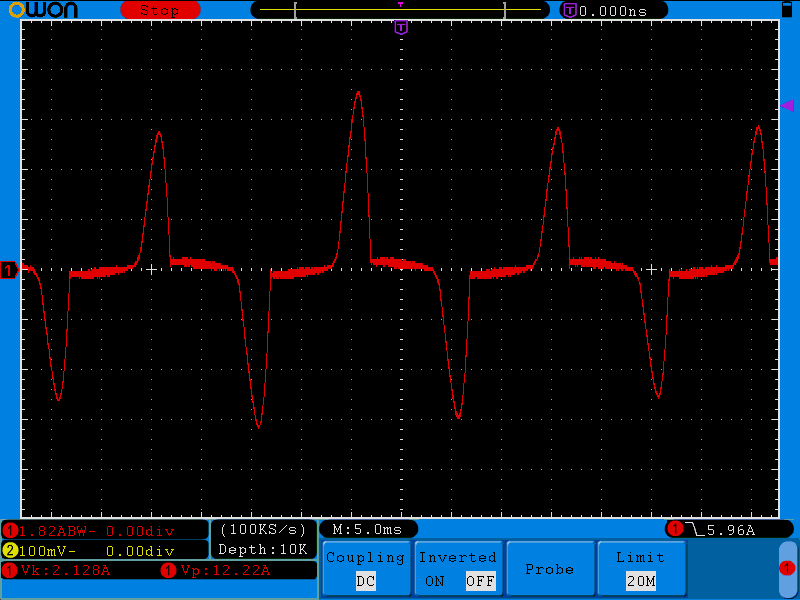Welcome, Georgi, to the OEM forum.
That formula is OK, but you must remember that current is not necessarily a nice “text book” sine wave, therefore your “1.414” might be wrong - and by a very large amount. It might be like this:
(Washing machine brushless d.c. motor on spin by @dBC Phase measurement and correction in IoTaWatt - #17 by dBC)
and in this case, the peak value - which is what limits the measurement - is much more than 1.414 × Irms. Only you know the type of load that is connected - and that will determine the shape of the current wave. It is very unlikely to be as bad as that image, but it is something you must allow for.
You must also allow for all the components to have a tolerance, so your 3.3 V might be low by a few percent, the resistors or regulator that biases to input to half the supply voltage might make that wrong also by a percent or two, and then there is the tolerance of the c.t. itself and your burden.
I usually say that, for a 3.3 V ADC input range, your rms voltage at the input must be approximately 1 V, and not more than 1.1 V, and that allows for some distortion of the current away from a nice sine wave, and in most cases enough allowance for component tolerances.
The power rating of the burden resistor is the same as any other resistor: P = V I = V² / R = I² R.
If the secondary current is 1 A, and the burden voltage is 1.1 V, the power rating is 1.1 W minimum. You must rate the resistor much higher than that for two reasons - you will extend its life significantly if it is working well below maximum power and therefore running much cooler, and the change of resistance due to temperature rise will be much less, therefore the overall accuracy will be better. I would suggest at least 5 W rating.
